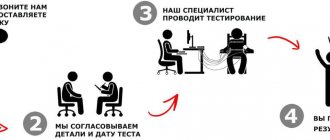Making decisions in work, business and normal everyday life is to a great extent connected with solving various kinds of problems. Not only the state of affairs at the same job, but also well-being, not only material, but also emotional and mental, can depend on how effectively and competently a person solves them. That is why we decided to devote the first lesson of our course specifically to this topic. Let's start by talking about what problems are in general and how they are classified.
What is the problem?
In the broadest sense, any problem is a complex issue of a theoretical or practical nature that requires study and resolution. In a scientific interpretation, a problem is a contradictory situation caused by mutually exclusive positions in explaining processes, objects or phenomena. In ordinary life, a problem can be formulated as a situation when it is clear what needs to be achieved, but it is not clear how to achieve it.
In the matter of decision making and problem solving, it is the formulation of the problem that plays a huge role. If the approach is incorrect, a person wanders away from resolving the situation, comes to false conclusions and, as a result, makes wrong decisions. The problems themselves, being a shortcoming or manifestation of something, are often characterized as a factor motivating action.
The essence of all problems requires a person to analyze, evaluate and draw up a concept to resolve the problematic issue, as well as subsequent verification of the correctness of conclusions and actions experimentally. But we will talk about methods for identifying, diagnosing and analyzing problems a little later, but for now we want to introduce you to their types. The ability to understand the typology of problems is the first step towards eliminating them.
Typical symptoms
The symptoms of psychological problems are wide-ranging. The appearance of one symptom does not indicate the presence of problems, but a combination of 3 or more signs should alert you. Typical signs:
- headache;
- nausea that appears in the morning, aversion to food;
- bloating, constipation;
- tingling in fingers;
- frequent viral diseases (colds, herpes)
- hand tremors, aching bones, like flu;
- severe itching, desire to wash hands;
- increased sweating;
- sudden weight loss or weight gain;
- cardiopalmus;
- cough and sore throat without other symptoms of acute respiratory infections;
- enuresis (especially in preschool children);
- strong feeling of hunger, constant overeating;
- feeling tired for no apparent reason;
- problems with potency, lack of sexual interest.
Separately, it is worth highlighting a panic attack as a unique set of symptoms indicating the presence of a psychological problem. A panic attack is a prolonged (from several minutes to several hours) state of discomfort in which the patient experiences a number of unpleasant sensations:
- coldness in the extremities, itching, goosebumps;
- difficulty breathing, chest pain;
- disorientation, feeling of “waking sleep”;
- attack of weakness;
- dizziness, fainting.
A panic attack, like other symptoms, appears suddenly. At first they happen rarely, then the frequency of manifestations increases. If it has been established that the cause is psychological and not physiological, special treatment will be required to eliminate it.
Types of problems
The variability and diversity of manifestations of the world is the main reason that problems differ in essence. So, they can relate to the following areas of life:
- Personality and psyche
- The science
- Society
- Economy
- Labor activity
- Ecology
- World
Let's look at each type in general terms.
1
Psychological problems
Psychological problems are expressed in a lack of balance in a person’s state of mind. Imbalance affects a person’s relationship with himself and the surrounding reality. Psychological problems can be obvious - these include jealousy, problems in relationships, fears, lack of will and self-control, etc. They can also be hidden - not fully manifested, but only partially and from time to time, and deep - hidden in the subconscious and requiring careful study by a psychologist.
2
Scientific problems
Scientific types of problems (these include organizational, methodological and theoretical) are a set of practical and theoretical problems that appear in scientific research activities - complex ones that run counter to existing knowledge and require solutions through scientific research. Solving scientific problems most often involves the collective efforts of people with different knowledge and skills.
3
Social problems
Problems of a social nature are expressed in the fact that the needs and interests of individuals and groups of people are not fully satisfied. Needs include both physiological needs (food, shelter, clothing) and spiritual ones (self-realization, education, communication). We will not go into details, but it is still worth saying that social problems are divided into family and individual-personal, socio-economic, socio-ecological, behavioral, problems of social stratification, symbolization and social modeling, and socio-political.
4
Economic problems
Economic problems are problems that affect the economy and standard of living of both individual states and the entire world community. For the most part, they are due to the fact that they require the development of economic ties between individual states into one economic complex. The primary problem here is the correct distribution of food among people. Economic problems are combined into one whole, because are completely dependent on each other. If we try to bring this type of problem to a common denominator, then all their diversity can be indicated by the questions “What to produce?”, “How to produce?” and “For whom to produce?” To put it simply, you need to wisely select the goods produced, the technologies and resources necessary for this, and correctly redistribute the finished product between economic entities, focusing on the limited number of goods and services produced.
5
Management problems
Management problems reflect the discrepancy between actual results and planned goals in work activity, producing problems and disruptions in the work process. The resolution of this type of problem is carried out through timely identification and diagnosis of problems, and subsequent competent management decisions. Management problems include strategic and tactical problems, as well as problems at the levels of management units.
6
Ecological problems
Environmental types of problems are generated by human activity, which prioritizes the satisfaction of human interests and causes irreversible and negative changes in the natural environment. Among the most pressing environmental problems are the destruction of the ozone layer, the greenhouse effect, acid precipitation and the issue of waste disposal. The ecology and state of the planet require the most active measures to resolve these problems, which are rightfully considered problems of a global scale.
7
Global problems
Global problems are a large separate category of problems that are natural and social in nature. Such problems concern the interests of all humanity and seriously threaten its future. Based on the characteristic features, global problems arise between man and society, man and nature, developed and developing countries. And the most pressing problems today are such problems as the threat of nuclear war, global terrorism, the environmental crisis, the shortage of natural resources, the demographic crisis, the cultural and economic difference in the standard of living of developed countries and third world countries, the consequences of the scientific and technological revolution, the spread of infectious diseases , drug addiction, alcoholism and other harmful habits.
This is the general classification of problems. Knowing it, you can accurately determine the type and level of the problem that has arisen, and therefore take the first step towards resolving it. However, it is much more important to take the next few steps, namely to diagnose the problem, subject it to accurate interpretation and identification, and in-depth analysis.
The following information addresses precisely all these issues and will be useful in solving most problems that come your way. We tend to assume that you are not planning to solve problems on a global scale, and therefore everything you learn can be fairly easily applied in practice. However, even if you are faced with the need to solve global issues, this knowledge will serve you well.
Causes of difficulties
A psychological problem is a reaction of the psyche to the external environment, and the cause should be sought not in the person, but in his environment. Factors that make adaptation difficult:
- Mistakes in education. Too much parental control is just as dangerous as indifference. In the first case, the child is deprived of the feeling of himself as an independent person. In the second, he cannot trust his parents, feels unnecessary and lonely.
- High expectations. If a person is successful in his dreams, but in reality he fails to realize himself, he develops narcissistic disorder. It often develops in adolescents and becomes the cause of drug addiction, aggression, and loss of contact with reality.
- Being in a dangerous situation. When a person finds himself in a situation that poses a real threat to life (for example, in a war zone), the psyche mobilizes all resources and is quickly depleted. If you manage to get out of the situation, PTSD develops - a disorder in which a person re-experiences the emotions that he experienced during the danger. Without treatment, this can lead to the development of paranoia and schizophrenia.
A psychologist should look for the cause of problems. If it detects an advanced disorder, medication may be needed. A psychiatrist is already doing this.
Aggression in teenagers
Peer review task
You have just seen examples of problems, and now we suggest you practice a little. Below is a small list of problems . You need to establish what type of problem this or that problem is and briefly justify your answer:
- Global warming
- Employees do not have the right to make decisions
- Pandemic
- Unemployment
- Search for extraterrestrial life
- Increased anxiety
- Redistribution of finances
This is a peer review assignment, so you will need to check 2 other people's work first and then upload yours. When checking other people's work, you need to evaluate the correctness (in your opinion) of the definition of the problem and the degree of validity of the opinion.
Statistics Full screen
Note that when determining the types of problems listed, it is hardly possible to make any noticeable error, because any problem can relate to several types at the same time. And in order to be able to more competently and correctly diagnose and analyze problems, we suggest continuing to study the lesson.
How to prevent the development of mental disorders?
People are susceptible to stress to varying degrees, but even the most resilient need a regular “reset.” To prevent the development of psychological problems you can use:
- Short meditations. This is a real phenomenon in the field of psychology: 5-7 minutes a day are enough to feel the result. Meditation is self-contemplation. You just need to close your eyes and breathe deeply, not paying attention to the surrounding noise. Meditation will help you regain strength in the afternoon and relieve fatigue in the evening. Practitioners claim that it helps not to age longer and maintains mental clarity.
- Grounding. A technique close to meditation, but you don’t need to close your eyes. You need to focus your gaze on some beautiful object. For example, look at a flower or a painting. You should try to prevent extraneous thoughts from arising, thinking only about the chosen subject.
- Keeping a diary. Writing down past events and impressions helps you rethink them and not get hung up on negative emotions.
- Morning pages. A method to relieve obsessive thoughts. Immediately after waking up, you need to write 5-10 pages, writing down everything that comes to mind.
- Water procedures. Washing is not only about hygiene. It has been proven that water calms and energizes. After a difficult day or unpleasant event, you need to take a bath or shower.
Also, the prevention of psychological problems will be maintaining a healthy lifestyle: a sufficient level of physical activity, proper nutrition, maintaining water balance. This is important for both young people and older people.
Diagnosis and problem analysis
Diagnosis of any problem begins with its interpretation. Interpretation, in turn, is expressed in assigning meaning and accurately defining a recognized (reliably established) problem. A problem can be given either the form of an opportunity, or the form of a crisis, or the form of a routine phenomenon.
If it is an opportunity, then it needs to be found and discovered, but if it is a crisis or routine phenomenon, it manifests itself, requiring immediate intervention. Routine problems that repeat from time to time can be classified as structured, while opportunities and crises can be classified as unstructured.
Based on this, appropriate solutions to problems are selected:
- Structured problems require programmed solutions
- Unstructured problems require unprogrammed solutions
By identifying and formulating problems, a person gets the opportunity to rank and prioritize them, and therefore the ability to draw up a complete action plan to eliminate them.
Ranking can be based on a number of factors:
- The best option for using abilities and time management
- Urgency of the problem and limited time for its solution
- The impact of the problem on a person, group of people or organization
- Consequences of the problem for a person, group of people or organization
- Life cycle of a problem (the problem can be solved on its own or in the process of solving other problems)
Based on these factors, a person can establish an order to resolve difficulties from most to least priority. Ranking problems is an important step in the decision-making process. As for the problems that are of paramount importance, they can be determined by several characteristics:
- The solution to the problem receives support from the outside (for example, management demands that a quarterly report be submitted within a week)
- The solution to the problem is provided with the necessary resources (for example, to compile a report, management allocates separate time and specialists from other departments)
- Solving the problem promises prospects that cannot or are not advisable to refuse (for example, an accurate report will allow the company to increase its competitiveness)
- Resolving a problem can affect the fate of an individual, a group of people or an organization (for example, if the report is not completed, the employee may lose his job)
Once the problem has been interpreted, it needs to be analyzed. It can be used to find negative aspects of a situation and establish cause-and-effect relationships. To conduct an effective problem analysis, you need to:
- Identify the parties involved, their interests and capabilities
- Identify the problems facing each party
- Build a problem tree reflecting cause-and-effect relationships
When starting to analyze a problem, it is necessary to establish in advance the boundaries and subject of analysis. This means that you need to find not only the problem area, but also identify the parties involved - the people, groups of people or organizations related to it.
A basic premise of stakeholder analysis is that different parties differ in their interests, concerns, and abilities. All this must be defined and formulated as precisely as possible. To do this, it is customary to use special questions, such as “Whose problems and whose potential are we (I) analyzing?” and “Who will be the winner and who will be the loser after the problem is resolved?” The main goal is to maximize the benefits and minimize the negative impact of solving the problem.
If the stakeholder analysis is done correctly, it becomes possible to:
- Identify potential partners in solving the problem
- Identify key players in solving the problem
- Predict the degree of influence of key players on the entire problem solving process
- Provide actions aimed at obtaining support from others
- Reduce the impact of various obstacles on solving the problem
Often it is the analysis of the problem that causes the greatest difficulties. In particular, this applies to serious and complex problems, for example, production, management or business problems. Special analysis methods have been developed specifically to simplify this task. They are designed to simplify decision-making by identifying and eliminating priority problems, carried out through the systematic collection, processing and analysis of data received about the problem.
Among the main methods of problem analysis are the following:
- bar chart
- Checklist
- Stratification
- Scatter diagram
- Control card
- Pareto chart
- Ishikawa diagram
All of them can be used either independently or in combination with each other, and are suitable for analyzing and solving problems of any kind. In order for you to have a more clear idea of these methods, let’s talk about them in more detail (we will immediately warn you that in order to study the method you are interested in in detail, you will definitely need to turn to third-party sources).
1
bar chart
Histograms are always used when you need to analyze the accuracy and stability of a process, track the quality of a product, etc. This method is considered one of the best quality control tools. Its main goal is to identify problems that need to be solved first and interpret the data associated with them.
The essence of the method is the graphical presentation of quantitative data. A histogram allows you to find patterns, assess the severity of the problem, and see the path to resolution. To build a histogram, you need to collect information and set the maximum and minimum values, divide this range into intervals and determine the width of the intervals, distribute the information in ascending order, count the frequency of all intervals and calculate the approximate frequency of data falling into each interval. Then, based on the information received, a histogram is constructed.
Example of a histogram:
Among the advantages of the histogram method are ease of development and construction, clarity, accurate factual data and the ability to better understand the problem and quickly find a way to solve it. But you should know that the most objective conclusions can be made only when there are large data samples.
2
Checklist
Checklists are a tool that makes it easier to use the data obtained by organizing it. The bottom line is that the data is recorded on a paper form with controlled characteristics included in it. Data is entered in accordance with these characteristics.
Before collecting information, you need to understand in advance what can be done with it, and for what purposes it is generally collected. The stated goal is the basis for defining the data type. As you collect them, you need to carefully organize them, recording sources and the information itself. The information must be reliable.
To compile a control sheet, the type of data and the order of collection is determined, the time period for collection is set, a heading is formulated reflecting the type of information, the source is indicated, a list of controlled parameters is compiled, and a form is developed that is as convenient as possible for filling out.
Example check sheet:
The advantages of the method include ease of understanding and application, clarity and a huge number of variations of sheets (if desired, you can create your own sheet).
3
Stratification
The stratification method is based on dividing the available data into subgroups based on the stratifying (separating) factor. These can be absolutely any characteristics. If such a factor is not established, the information is combined, as a result of which it becomes difficult to establish the relationship between the data obtained and the features of their occurrence.
For example, when analyzing the source of a defective product supplied to a company by different suppliers, it is best to select suppliers as a stratification factor and then divide the defective product by supplier.
An example of a graphical display of the stratification method:
The main advantage of the stratification method is its simplicity and the ability to visually display the information obtained for the purpose of developing and making decisions to eliminate problems.
4
Scatter diagram
A scatter diagram helps to identify dependencies and understand the nature of the relationship between two different parameters of a process. These parameters can be two factors affecting the same characteristic, two different characteristics, etc. By establishing the relationship between the two parameters, control of the entire process of problem analysis and decision-making is greatly facilitated. It is also important to note that a scatter plot can be used to determine cause and effect relationships.
The diagram, as a rule, takes the form of a graph obtained by plotting points obtained as a result of observation. The coordinates of the graph reflect the values of the parameter being studied and the factor that influences it. And the location of the points shows whether there is a connection between them, and what its features are.
Scatter chart example:
The advantages of the scatter plot method are its clarity and simplicity in assessing the relationship found. However, only those who have accurate information on the compared parameters can draw conclusions.
5
Control cards
Control charts help in situations where you need to track a process over time and influence it before it gets out of control. This allows you to evaluate the controllability of the process and its reproducibility, as well as take corrective measures and check their effectiveness (if the process turns out to be uncontrollable). Among other things, the method can prevent deviations from the norm.
To create a control chart, you first select a sample metric and chart type, then collect data and calculate control limits, centerline, and sample characteristics. After this, a map is built, the controllability of the process is assessed and improvement measures are determined. If necessary, the card can be recalculated.
Example of a control chart:
The advantages of the control chart method include the fact that it helps to identify potential problems before making a decision, improves the quality (of actions, products, etc.) and reduces the costs of ensuring it. The disadvantage is that it is difficult to build a competent control chart, because To do this you need to have the appropriate knowledge.
6
Pareto chart
The Pareto chart helps you find the highest priority problems, determine courses of action, and allocate effort to more effectively solve problems and make decisions. A Pareto chart can be performance-based (helps to find the main problem) and cause-based (helps to find the cause of the problem).
To construct a diagram, the problem and its associated characteristics are identified, and the root causes that create the greatest difficulties are identified and prioritized. Then the graph itself is constructed, objectively representing the actual situation. You should know that to successfully apply the method, you need to clearly understand what problems require intervention, develop a data recording form (for example, a checklist), collect information and calculate the results for each factor. Finally, the diagram is analyzed.
An example of a Pareto chart (we recommend that you read our articles “The Pareto Principle” and “Six Sigma”):
The tangible advantages of the method are clarity and relative ease of use, including for non-specialists. But to get the right conclusions you need to build a structured diagram.
7
Ishikawa diagram
The Ishikawa diagram is an effective tool for determining the cause-and-effect relationships between the analyzed object and the factors affecting it, as well as for finding the true causes of emerging problems (the Ishikawa diagram is often called a cause-and-effect diagram or a fishbone diagram).
In essence, the Ishikawa diagram is a graph, work with which is built on several stages. Thus, the causes and factors influencing the result are determined, then they are systematized into semantic sections, evaluated and prioritized. Next, the resulting structure is analyzed, reasons that cannot be influenced are cut off, and only those that are of greatest importance and those that can be influenced are taken into work.
Example of an Ishikawa diagram:
To find the reasons that have the greatest impact on the problem, it is recommended to use the brainstorming method. You can learn more about the diagram itself and the principles of working with it here.
And finally, we will introduce you to another effective method with which you can more clearly formulate problems. It's called Occam's razor.
8
Occam's razor
Occam's razor is a personal effectiveness tool created back in the early 14th century (read more here), but it remains relevant today. It is used by mathematicians, physicists, philosophers and even writers in their work. Anyone can safely adopt this method, which allows them to better understand problems and issues, make decisions more effectively and persuade.
Occam's razor is based on Aristotle's famous saying: “Nature always takes the shortest path,” but it is formulated somewhat differently: “What can be explained with less should not be expressed with more.” This is where the “razor” comes into play - it cuts off everything unnecessary and leaves the simplest.
However, the principle should not be understood as meaning that one should always be simpler. Otherwise, you can achieve results that are the opposite of what is required, ridiculous and even absurd. The words of Einstein, who said that everything should be reduced to simplicity, but not to primitiveness, are best suited to Occam's razor.
In practical activities, the “razor” can be used in different ways: firstly, it can be used to “cut off” unnecessary details when considering problems and issues, and secondly, the same can be done when forming and making decisions. Here are some examples of practical applications of this tool:
- Given two different theories that explain the observed phenomena, you need to choose the one that is simpler. A simpler interpretation is more likely to be correct than a complex one.
- When choosing between several solutions, follow the rule of harmony. Simply put, if you have a solution that is clean and beautiful, it is more likely to be the right one.
- When convincing people of the truth of your point of view, use the simplest arguments. Elegance and simplicity of logical constructions will give your words more persuasiveness.
When Michelangelo was asked how he created his amazing sculptures, he said: “I just take a stone and cut off all the excess.” So do you - use Occam’s razor to analyze and solve problems, make decisions, and explain your position. But remember that you don’t need to go too far, so as not to spoil the beauty of simplicity with primitiveness.
Despite the fact that most of the problem analysis methods we have considered at first glance relate to the areas of production and business, with skillful adaptation, all of them can be projected into any area of human activity, from planning and goal setting to training, self-education and other things.
But dealing with problems is only a small part of the complex decision-making process itself. Having learned to identify problems, interpret and analyze them, a person definitely moves to a new stage of his development. The next stage will be mastering the skill of making the right decisions.
In the next lesson we will learn how people make decisions and what approaches to decision making exist. We'll talk about intuitive and rational decisions, decisions based on judgment. We will also once again touch upon the issue of diagnosing problems, talk about relevant information, limitations and criteria for decision-making, identification, evaluation and selection of alternatives, implementation of decisions made and factors influencing decision-making.
Psychosomatics
At first glance, mental health does not have much impact on physical health. Patients, when visiting a doctor, describe only physical symptoms, without mentioning psychological difficulties. The doctor cannot make a correct diagnosis, treatment is delayed and does not produce results. The physical manifestations of the disease will not go away until the true cause, the psychological one, is eliminated.
To understand how nervous tension affects the body, you need to open an anatomical atlas. All organs are connected and united by two systems: circulatory and lymphatic. Normally, all processes function continuously: nutrients enter the body with the blood, and together with the lymphatic fluid they are removed from the body.
But if the psychological balance is disturbed, nervous tension arises. The brain, as an internal manager, triggers a survival mechanism that causes the adrenal glands to produce a stress hormone. In a situation of real danger, this gives a person the strength to run away or fight. The psychological problem is not perceived as an objective danger, the person remains tense and the excess hormones are not consumed. Gradually, the stress hormone interferes with the functioning of the brain, digestive and cardiovascular systems.
The somatic manifestation of the disease is the presence of symptoms in the absence of a physiological cause. Wandering pains, muscle spasms, swelling, migraines, a sudden attack of allergies - all these signs can be somatic. If tests and ultrasound do not help find the cause of the malaise, you need to consult a psychologist.
Betrayal of a loved one
Anna always believed in her husband. From the first day she realized that this was her person and decided that from now on and forever they would become inseparable (in fact, one whole). When I found out about the betrayal, I couldn’t find a place for myself. This injury was so severe that the girl had to endure the blow for a long time and painfully. But time passed, and the realization came that everything happened for a reason.
Anya analyzed the situation and realized that she was too trusting and naive. For some reason, she believed the man almost immediately, agreeing to marry him and turning a blind eye to the “red flags” that seem too obvious today (and then seemed insignificant).
The injury helped her become wiser and more selective. That is why today she is happy in her second marriage and is glad that she had such an experience in her life.
How to use standard speech structures?
- From the list of proposed constructions, it is necessary to select only those that more accurately convey the thoughts of the author of the essay or the author of the source text.
- It is important to correctly include information from the source text in ready-made speech structures, and, if necessary, change the form of words in them, not forgetting the requirements of grammar and speech culture.
- Carefully think through logical transitions from one thought to another. Each paragraph of the essay should represent a relatively complete whole.
Proper use of speech structures will help graduates avoid typical mistakes when formulating a text problem.











